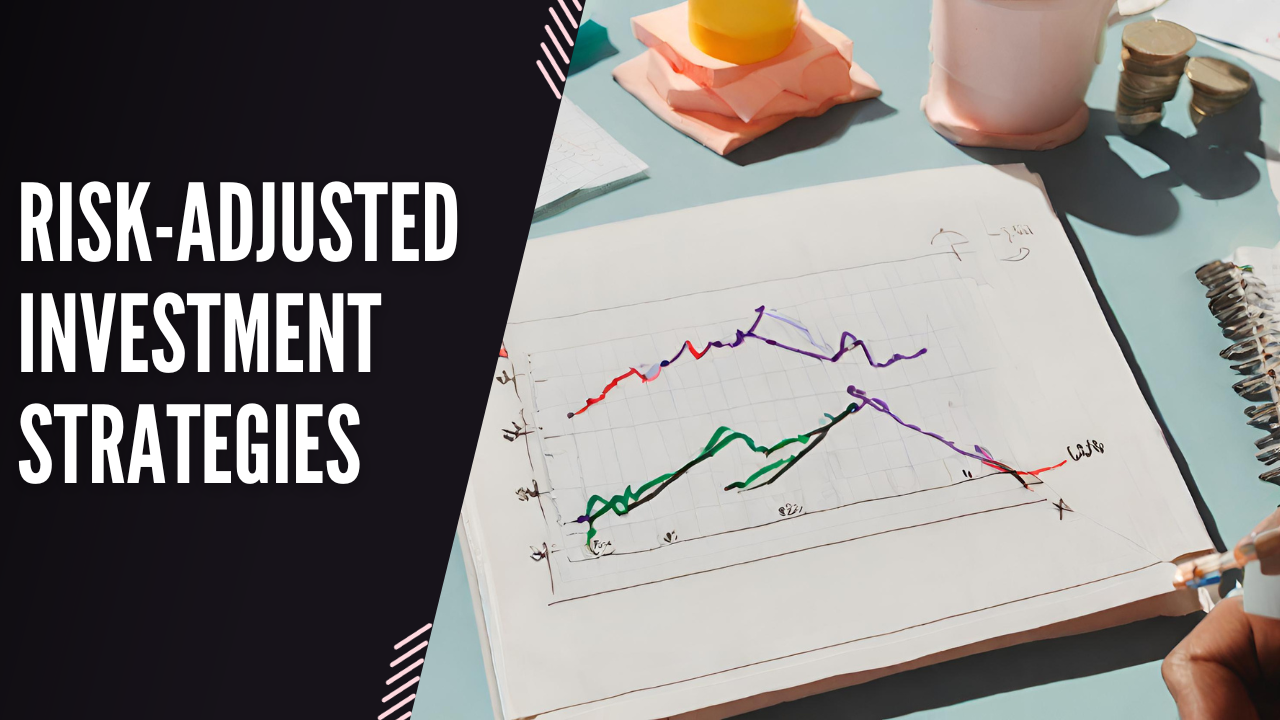Table of Contents
Introduction (Risk Adjusted Investment Strategies)
Investing can be a rewarding but challenging journey. While the primary goal is to maximize returns, it is equally important to consider the associated risks. Enter risk-adjusted returns – a powerful concept that takes into account the level of risk involved in an investment. In this article, we’ll explore the intricacies of risk-adjusted returns and unveil effective investment strategies to help you optimize your portfolio.
Understanding Risk-Adjusted Returns

When evaluating investments, it’s not just about the returns achieved, but also the amount of risk assumed to attain those returns. Risk-adjusted returns provide a clearer and more comprehensive picture of an investment’s performance by factoring in the level of risk it entails.
The Sharpe Ratio: Balancing Risk and Reward
One popular measure of risk-adjusted returns is the Sharpe ratio. Developed by Nobel laureate William F. Sharpe, this ratio assesses the excess return generated by an investment compared to the risk-free rate of return, adjusted for the investment’s volatility.
The formula for the Sharpe ratio is as follows:
Sharpe Ratio = (Return of the Investment - Risk-Free Rate) / Standard Deviation of the InvestmentA higher Sharpe ratio indicates better risk-adjusted returns, as it signifies a greater excess return per unit of risk taken.
The Importance of Diversification
Diversification plays a pivotal role in achieving risk-adjusted returns. By spreading your investments across different asset classes, industries, and geographies, you can effectively reduce the overall risk of your portfolio. This is because different investments may perform differently under various economic conditions.
- Diversify across asset classes: Allocate your investments across a mix of stocks, bonds, commodities, and real estate.
- Diversify across industries: Choose companies from diverse industries such as technology, healthcare, finance, and consumer goods.
- Diversify across geographies: Consider investing in both domestic and international markets to reduce country-specific risks.
By diversifying, you can minimize the impact of any single investment’s poor performance and potentially enhance risk-adjusted returns.
Risk Management: The Key to Success (Investment Strategies)
Risk management is an integral part of effective investment strategies. By actively monitoring and managing risks, investors can minimize potential losses while maximizing returns.
- Setting a risk tolerance: Determine your risk tolerance based on your financial goals, time horizon, and personal comfort with risk. This will help guide your investment decisions.
- Regular monitoring and rebalancing: Keep a close eye on your investments and periodically rebalance your portfolio to ensure it aligns with your risk tolerance. Adjust the allocation of assets as needed.
- Asset allocation: Allocate your investments based on your risk tolerance and market conditions. Adjust the proportion of stocks, bonds, and other assets to optimize risk-adjusted returns.
- Utilizing stop-loss orders: Implementing stop-loss orders can help limit losses by automatically selling an investment if it reaches a predetermined price.
By proactively managing risks, investors can mitigate the negative impact of market volatility and improve risk-adjusted returns over the long term.
Real-Life Examples and Strategies

Let’s explore some real-life examples of risk-adjusted returns and strategies employed by successful investors:
Warren Buffett’s Value Investing Approach
Warren Buffett, one of the most successful investors of our time, follows a value investing approach. He focuses on identifying undervalued companies with a strong competitive advantage and long-term growth potential. This strategy seeks to maximize risk-adjusted returns by investing in quality businesses at attractive prices.
The Endowment Model
Institutions, such as university endowments, often utilize the endowment model. This approach diversifies across multiple asset classes, including stocks, bonds, hedge funds, private equity, and real estate. By employing a mix of investments with varying levels of risk and return, the endowment model aims to achieve attractive risk-adjusted returns over the long run.
Tactical Asset Allocation
Tactical asset allocation involves adjusting the allocation of assets based on short-term market conditions. This strategy aims to capitalize on market inefficiencies by overweighting or underweighting certain asset classes. Tactical asset allocation allows investors to adapt to changing market conditions and potentially enhance risk-adjusted returns.
Conclusion
Risk-adjusted returns play a crucial role in effective investment strategies. By considering the level of risk associated with an investment, investors can make informed decisions that balance potential rewards and risks. Diversification, risk management techniques, and following proven investment strategies are essential in achieving optimal risk-adjusted returns. So embark on your investment journey with a focus on risk-adjusted returns and unlock the potential for long-term success.
“Risk-adjusted returns provide a compass to navigate the tumultuous waters of investment, guiding investors towards strategies that optimize both reward and risk.”









